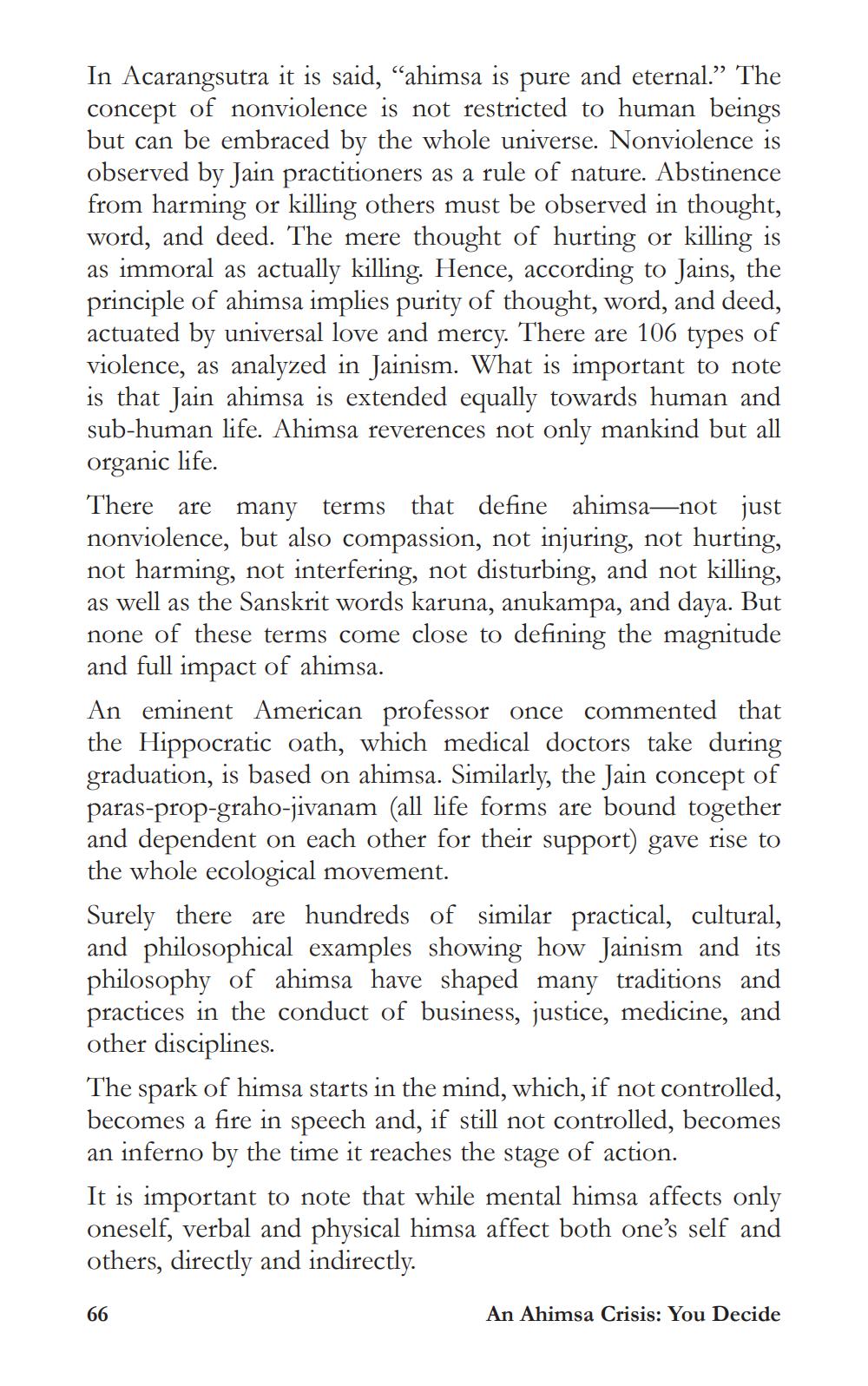________________
In Acarangsutra it is said, "ahimsa is pure and eternal.” The concept of nonviolence is not restricted to human beings but can be embraced by the whole universe. Nonviolence is observed by Jain practitioners as a rule of nature. Abstinence from harming or killing others must be observed in thought, word, and deed. The mere thought of hurting or killing is as immoral as actually killing. Hence, according to Jains, the principle of ahimsa implies purity of thought, word, and deed, actuated by universal love and mercy. There are 106 types of violence, as analyzed in Jainism. What is important to note is that Jain ahimsa is extended equally towards human and sub-human life. Ahimsa reverences not only mankind but all organic life. There are many terms that define ahimsa—not just nonviolence, but also compassion, not injuring, not hurting, not harming, not interfering, not disturbing, and not killing, as well as the Sanskrit words karuna, anukampa, and daya. But none of these terms come close to defining the magnitude and full impact of ahimsa. An eminent American professor once commented that the Hippocratic oath, which medical doctors take during graduation, is based on ahimsa. Similarly, the Jain concept of paras-prop-graho-jivanam (all life forms are bound together and dependent on each other for their support) gave rise to the whole ecological movement. Surely there are hundreds of similar practical, cultural, and philosophical examples showing how Jainism and its philosophy of ahimsa have shaped many traditions and practices in the conduct of business, justice, medicine, and other disciplines. The spark of himsa starts in the mind, which, if not controlled, becomes a fire in speech and, if still not controlled, becomes an inferno by the time it reaches the stage of action. It is important to note that while mental himsa affects only oneself, verbal and physical himsa affect both one's self and others, directly and indirectly.
66
An Ahimsa Crisis: You Decide




